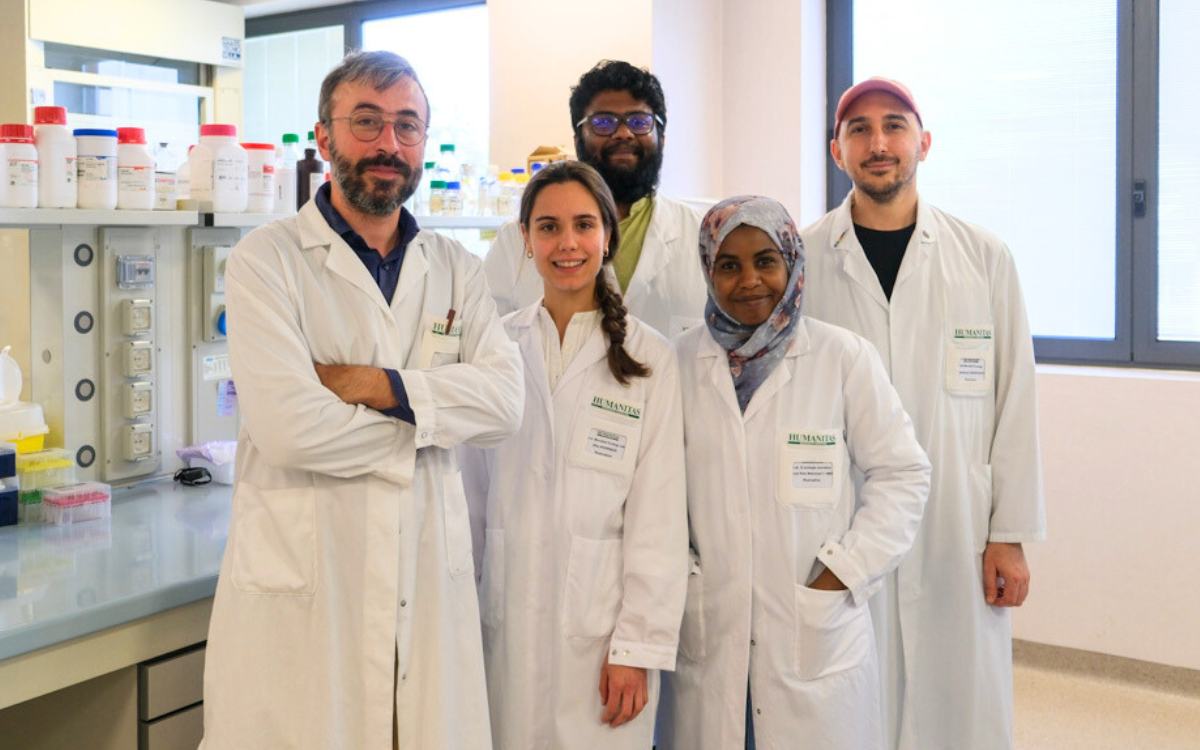Studying bile acids to understand the ecology of our gut bacteria

The BADGE project will shed light on the complex interactions between gut bacteria and bile acids, to clarify the processes that influence proliferation of pathogens and emergence of metabolic disorders
Our gut microbiome is essential for digestion, but also for regulating our immune system and protecting us from pathogens. However, for these processes to work well, there needs to be continuous dialogue between the host – us – and bacteria: a dialogue that takes place thanks to signaling molecules, including bile acids. A new project, which has received a Starting Grant from the Italian Science Fund (FIS2), will study how bile acids affect bacterial communities and vice versa, to shed light on the still unclear mechanisms by which the microbiome influences the regulation of bile acids. The BADGE project is led by Gabriele Micali of the Microbial Ecology Lab at Humanitas Research Hospital and will last three years. By systematically studying how specific bacterial communities modify bile acids, BADGE will pave the way for new strategies to address bile acid dysregulation, a condition that can lead to liver disease and metabolic disorders.
Bacteria and bile acids: a complex relationship
Bile acids are produced by the liver starting from cholesterol, and released into the small intestine, where they help assimilate fats and vitamins. Here, high concentrations of bile acids appear to have antimicrobial activity, reducing the number of bacteria present. In this process, they are partially absorbed by the body, but about 5% reach the large intestine and undergo a delicate modification process guided by the microbiome, taking on different forms and functions. Recent studies have found that these modified bile acids then play an important role in the production cycle of those same bile acids, and influence their homeostasis: they indicate to the liver how many bile acids to produce, continuing the cycle.
“In recent years, the discovery of new modified forms of bile acids has generated great interest in understanding what happens to human receptors, how these compounds are absorbed, and how cholesterol accumulates in the liver. But to understand how to prevent or treat dysregulation, it is essential to understand which bacterial species modify bile acids: in what ways, under what conditions, and for what reason,” explains Gabriele Micali. “It’s not yet clear why bacteria make these modifications. Even more fascinating is the fact that different bacteria modify bile acids in opposite ways: shedding light on the function and impact of bile acids on the physiology and ecology of bacteria is key to understanding how the human host and bacteria communicate.”
In this project, Gabriele Micali’s group will take a systematic approach to test the validity of different hypotheses currently being discussed within the scientific community. “We have long believed that some bacteria detach amino acids from bile acids to reduce their toxicity or to obtain nutrients, but when testing these hypotheses, the results have been contradictory and inconclusive. And the discovery that some bacteria reattach amino acids to bile acids has made the issue even more complex.”
Since the conditions of the microbiome also affect the proliferation of pathogens, the project also aims to understand how much changes in bile acids contribute to the human host’s resistance to colonization by bacteria such as salmonella. “Sometimes the presence of these pathogens leads to inflammation, and sometimes the host remains healthy. There are many reasons why this can happen, and studying the intestinal environment more closely, and therefore also the regulation of bile acids, can help us understand how to prevent inflammation caused by pathogens,” adds Micali.
From physics to biology
The activities of BADGE are part of the broader research conducted by Gabriele Micali’s group on the ecology of microbial communities. Another ongoing project, for example, studies amino acid exchanges between bacteria, and the ways in which certain species of bacteria, in specific spatial contexts, emerge and take over a larger bacterial population.
“It is an area in which teamwork and interdisciplinarity are very important. It is one of my group’s strengths. Being able to apply different approaches,” from mathematical models to microfluidics to molecular biology, “allows us to carry out innovative and even fun projects, because we learn from our fellow adventurers,” comments Gabriele Micali. Interdisciplinarity has also been a feature of Micali’s own research career. “I am a physicist, and I have always been fascinated by mathematics and fundamental physics models. I became interested in complex systems, including biological ones, and realized that some concepts and reference systems in physics could be applied in innovative ways to biology, making physics research more applied and offering systems on which to test hypotheses,” he says. “I started working with bacteria as early as my master’s thesis and then my doctorate. Now I work in microbiology, physiology, and bacterial ecology.”
The Microbial Ecology Lab has created several synergies with other Humanitas research groups, for example in the fields of microfluidics, the microbiome, and diseases of the intestinal mucosal cells. “With this grant, we will explore bacterial processes that are still largely unobserved. So far, I have mainly been involved in fundamental research, and this project is also a step towards more applied aspects of research and towards new collaborations with other clinical and translational groups at Humanitas.”